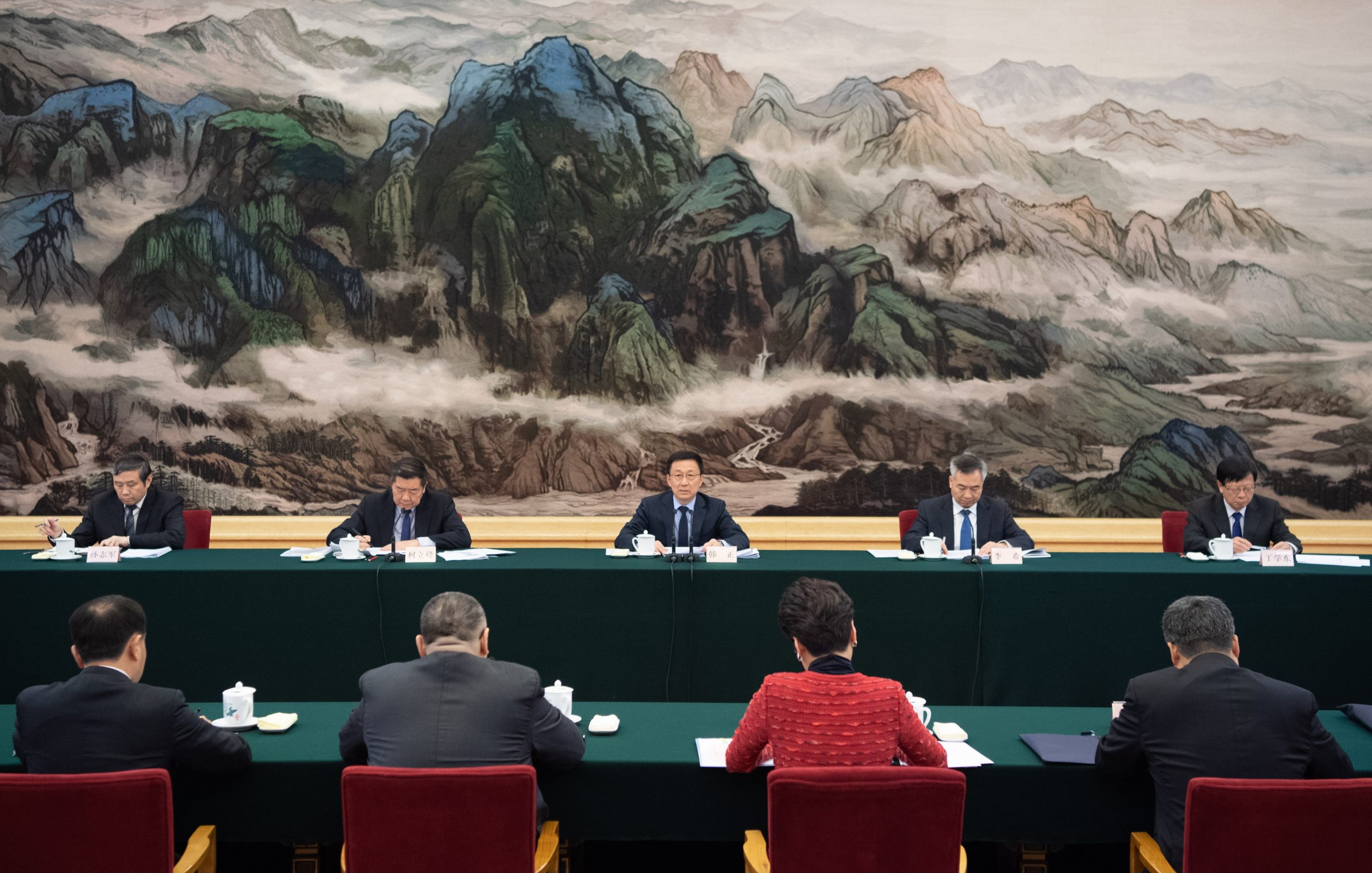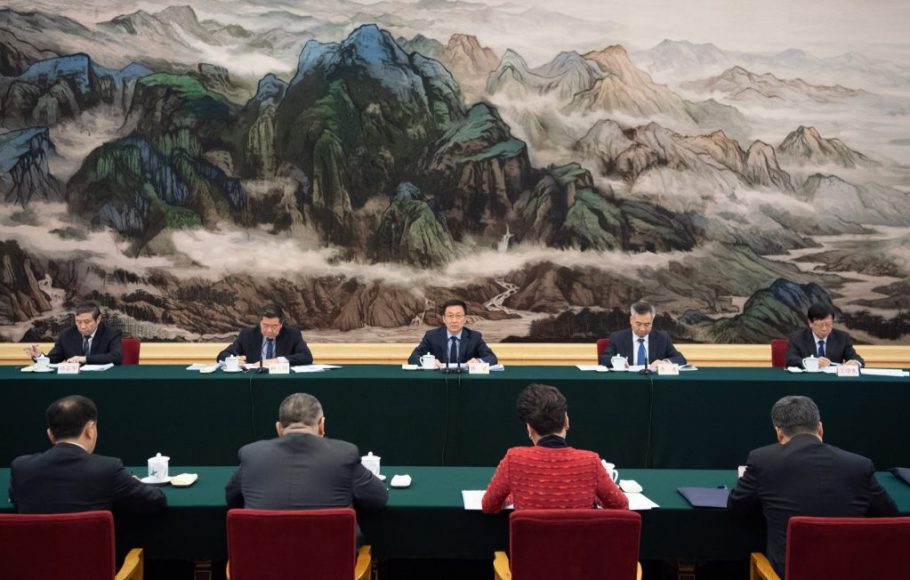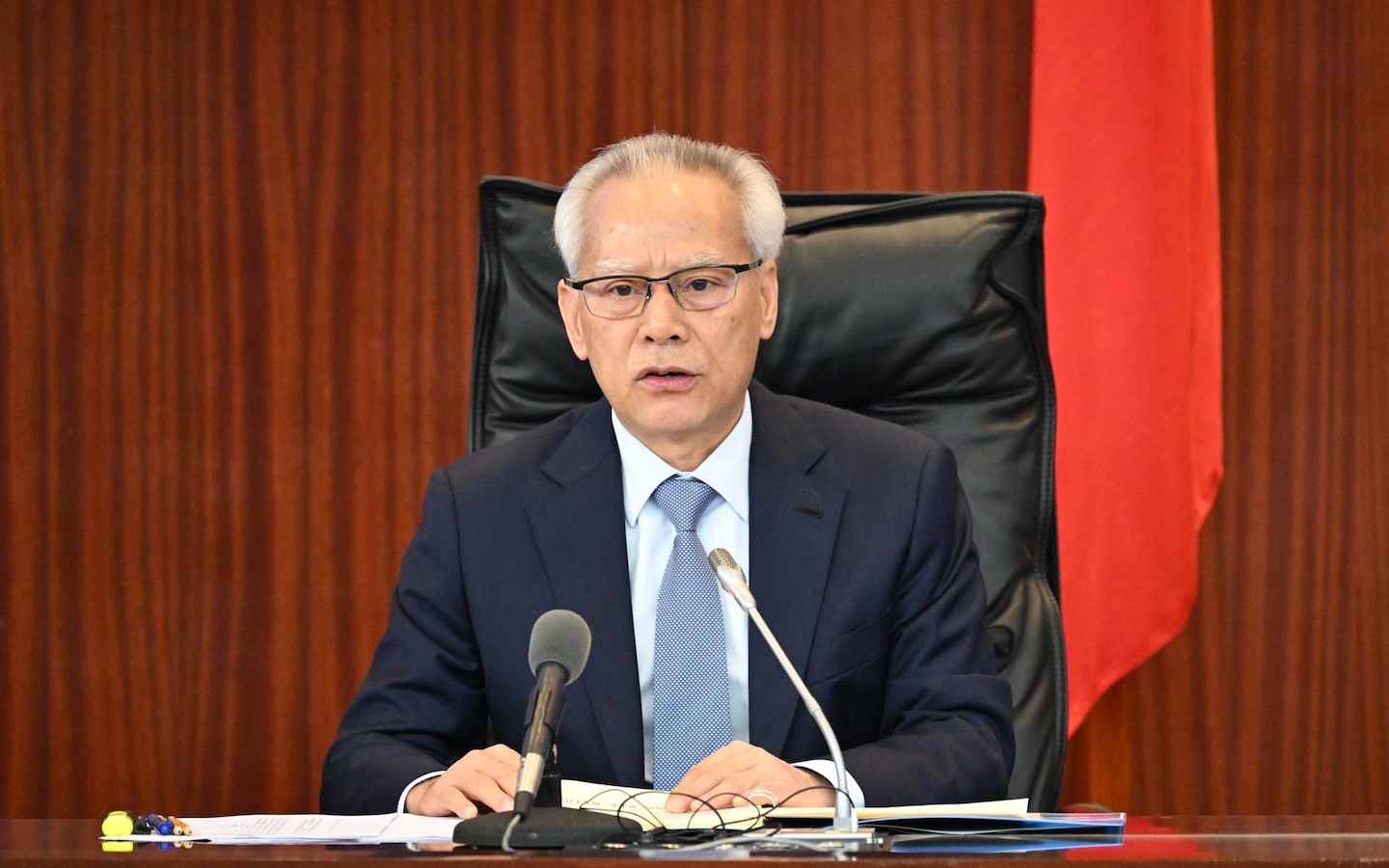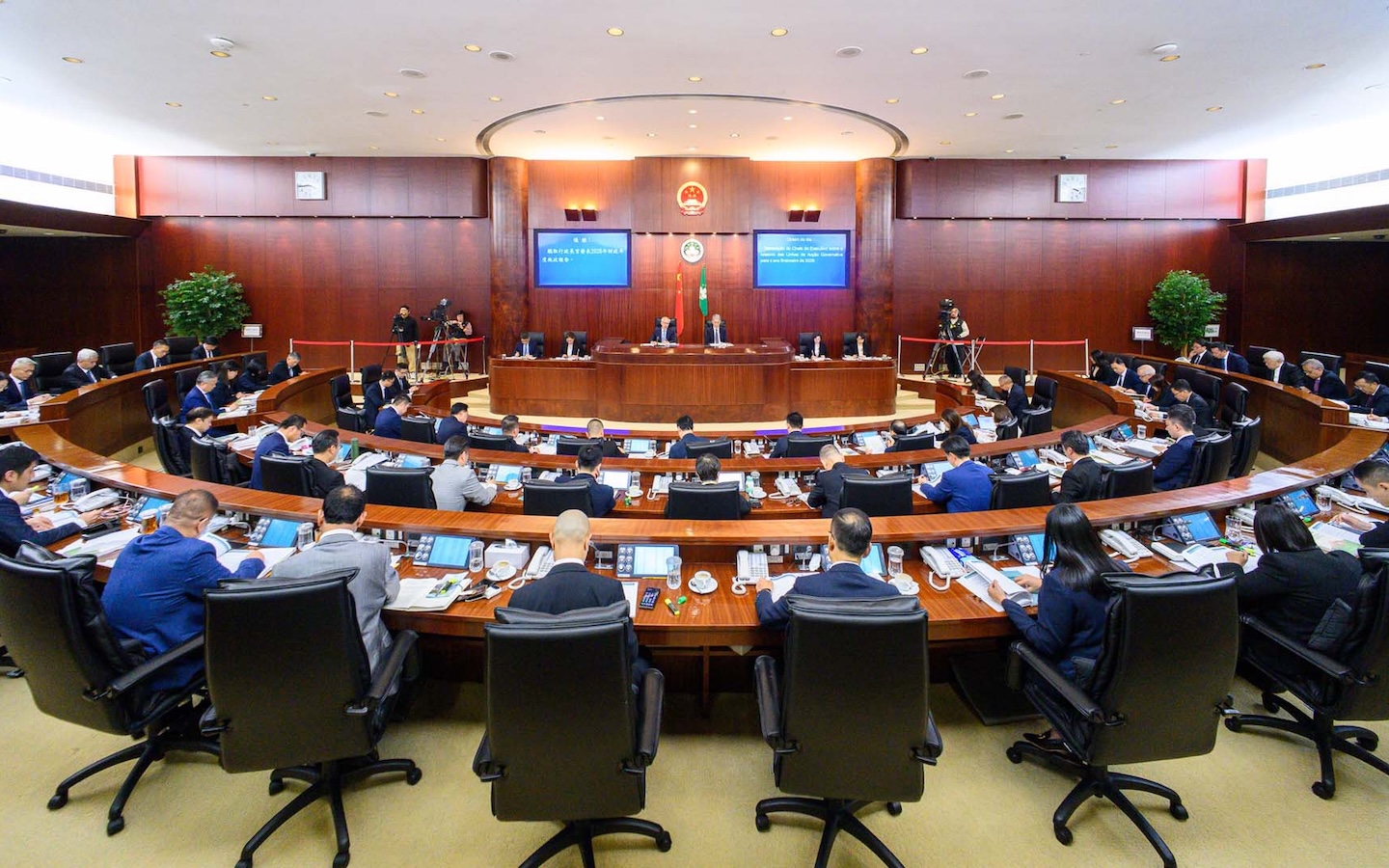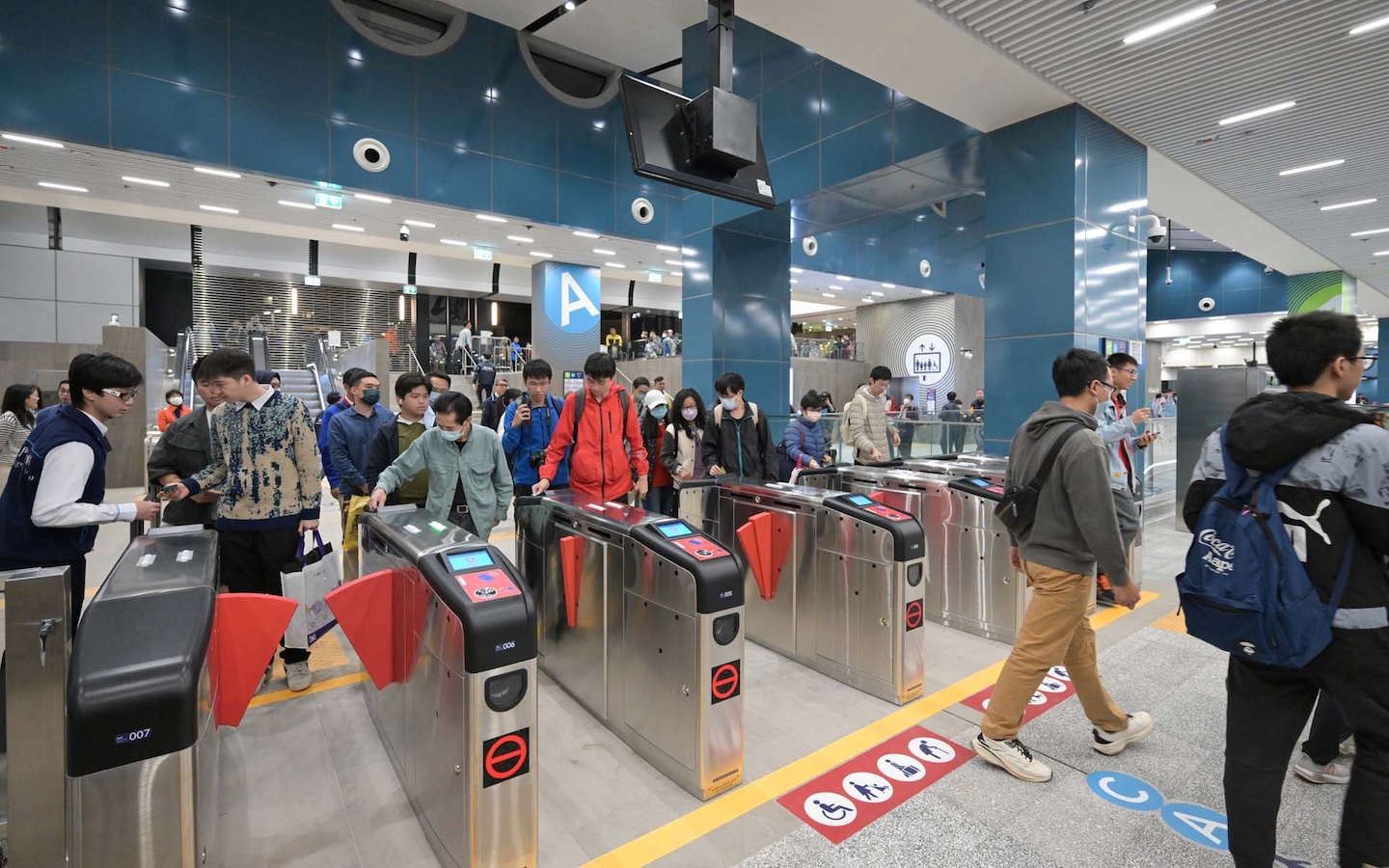On 1 July 2017, the National Development and Reform Commission and the governments of Guangdong, Hong Kong, and Macao signed the Framework Agreement on Deepening Guangdong-Hong Kong-Macao Cooperation in the Development of the Greater Bay Area (GBA) in Hong Kong.
Since then, the relevant central government departments and the three local governments have strived for policy breakthroughs on the joint development of the GBA.
The Outline Development Plan for the Guangdong-Hong Kong-Macao Greater Bay Area went into effect on 18 February 2019, clearly outlining the strategic positions and development objectives of the GBA.
Known more simply as the Plan, its 11 chapters cover general background, basic principles, spatial layout, an innovation and technology hub, infrastructure connectivity, a modern industrial system, ecological conservation, quality living area, participation in the Belt and Road Initiative (BRI), economic cooperation platforms, and the implementation of the Plan.
In the immediate term, the Plan covers the present to 2022 and extends to 2035 in the long term.
Robust economic foundation
The GBA leads the country in economic development. It has a comprehensive industry system, with a distinctive cluster advantage and strong economic complementarity. In 2017, the GBA’s gross domestic product stood at around RMB10 trillion (US$1.488 trillion).
The GBA has intensely implemented an innovation-driven development strategy. Guangdong, Hong Kong, and Macao have outstanding capabilities in scientific research and related commercial application. They are home to numerous universities, scientific research institutes, high-tech enterprises and large-scale national scientific projects with important national, and even global, influence.
A high degree of internationalisation positions the GBA well for continued growth while the strong cooperative foundation between the 11 members ensures a productive partnership going forward.
However, the GBA faces many challenges, from external instability and rising protectionism to overcapacity and the imbalance and mismatch of supply and demand. The different social and legal systems of Guangdong, Hong Kong and Macao, each a separate customs territory, also present obstacles. Market connectivity needs to be further improved to achieve an efficient flow of the factors of production.
There remains a relatively wide development gap within the GBA thus coordination and compatibility will need to be strengthened. Homogeneous competition and mismatch of resources exist in certain regions and sectors. Continuous economic growth in Hong Kong lacks sustainable and stable support while the economic structure of Macao is relatively homogeneous with limited resources for development. The market economy structure in the nine Pearl River Delta municipalities calls for improvement.
Regional development faces various bottlenecks, including growing constraints on resources and energy supplies, escalating pressure on ecology and the environment, and a gradual reduction in the demographic dividend.
By 2022, the combined strength of the GBA should increase substantially, with deeper cooperation among Guangdong, Hong Kong, and Macao. The result will be a framework for an international first-class bay area and a world-class city cluster that is vibrant and highly innovative in a pleasant ecological environment.
By 2035, the GBA will become an economic system supported by innovation with greater international competitiveness. The markets within the GBA should be highly connected, with a very efficient flow of various resources and the factors of production. The promise of an international first-class bay area for living, working, and travelling should be fully realised.
Spatial layout
The Plan calls for leveraging the leading roles of the strong links of Hong Kong-Shenzhen, Guangzhou-Foshan and Macao-Zhuhai, while deepening cooperation between Hong Kong and Shenzhen, Macao and Zhuhai, and expediting the integrated development of Guangzhou and Foshan.
The GBA will rely on a rapid transport network involving high-speed intercity railways, high-grade motorways, ports, and airports to form a well-connected spatial network of major cities. The Plan states the need to better utilise the Hong Kong–Zhuhai–Macao Bridge, speed up the construction of key transport infrastructure (such as the Shenzhen–Zhongshan Bridge and the Shenzhen–Maoming Railway), enhance development on the west bank of the Pearl River, and foster synergy between the east and west banks of the Pearl River.
-

Macao | Photo by Xinhua News Agency -
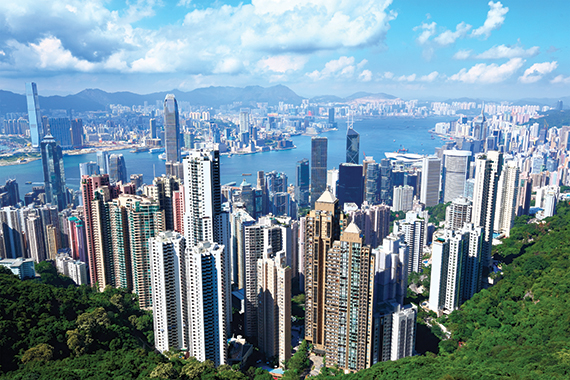
Hong Kong | Photo by Xinhua News Agency
-
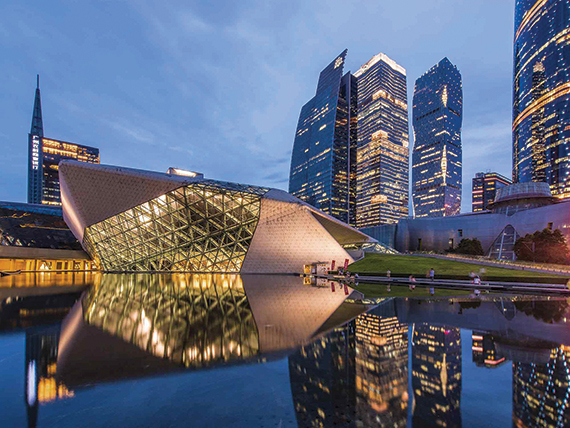
Guangzhou | Photo by Xinhua News Agency -
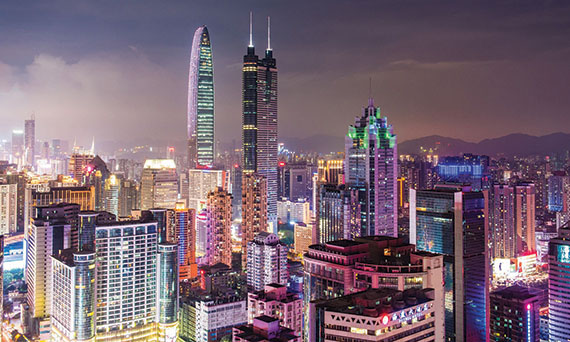
Shenzhen | Photo by Xinhua News Agency
The GBA will build on the four core cities of Macao, Hong Kong, Guangzhou, and Shenzhen as engines for regional development. The Plan’s objectives for the four cities are as follows:
- Macao. To develop into a world-class tourism and leisure centre, and a commerce and trade cooperation service platform between China and Lusophone countries. To promote an appropriate level of diversified economic development, and to develop into a base for exchange in a setting where diverse cultures coexist with the predominantly Chinese culture.
- Hong Kong. To consolidate and enhance its status as international financial, transportation and trade centres. To strengthen its status as a global official RMB business hub and its role as an international asset management centre. To develop the innovation and technology industries, nurture emerging industries, and establish itself as the centre for international legal and dispute resolution services in the Asia-Pacific region.
- Guangzhou. To fully leverage its role as a national core city and an integrated gateway city, strengthen its functions as an international commerce and industry centre and an integrated transport hub, and enhance its functions as a technological, educational, and cultural centre.
- Shenzhen. To leverage its role as a special economic zone, a national economic core city and a national innovation city, expedite its transformation into an international city, and strive to become a capital of innovation and creativity with global influence.
Innovation and technology hub
The Plan aims to better leverage the functions of the Mainland-Hong Kong and the Mainland-Macao Science and Technology Cooperation Committees. It seeks to promote the integration of Hong Kong and Macao into the national innovation system, enabling the SARs to play a greater role, and to support the development of the Guangzhou-Shenzhen-Hong Kong-Macao innovation and technology corridor.
The Plan promotes the gradual opening up to Hong Kong and Macao the major national R&D infrastructure facilities and large-scale national R&D equipment located in Guangdong. It supports the in-depth integration of industries, academia and research of Guangdong, Hong Kong, and Macao enterprises.
The Plan supports the development of major carriers for innovation, such as the Hong Kong-Shenzhen Innovation and Technology Park, the Sino-Singapore Guangzhou Knowledge City, the innovation and technology base in Qingsheng of Nansha, and the Traditional Chinese Medicine Science and Technology Industrial Park of Cooperation between Guangdong and Macao in Hengqin.
The Plan supports the continued development of Partner State Key Laboratories in Hong Kong and Macao. It also calls for Hong Kong and Macao R&D institutes in Guangdong to enjoy the same treatment as other mainland R&D institutes.
It supports the development of Hong Kong and Macao-oriented incubators of technology enterprises in the nine Pearl River Delta (PRD) municipalities.
The Plan aims to step up the protection and exploitation of IP (intellectual property), to capitalise on the IP collaboration mechanisms of Hong Kong-Guangdong, Macao-Guangdong and the Pan-Pearl River Delta region, and to strengthen cooperation in areas of IP protection and training of IP professionals in the GBA.
Infrastructural connectivity
The Plan aims build a modern, comprehensive transport system in the GBA by strengthening infrastructure development, enhancing connectivity, optimising operations, and establishing a network with a rational layout.
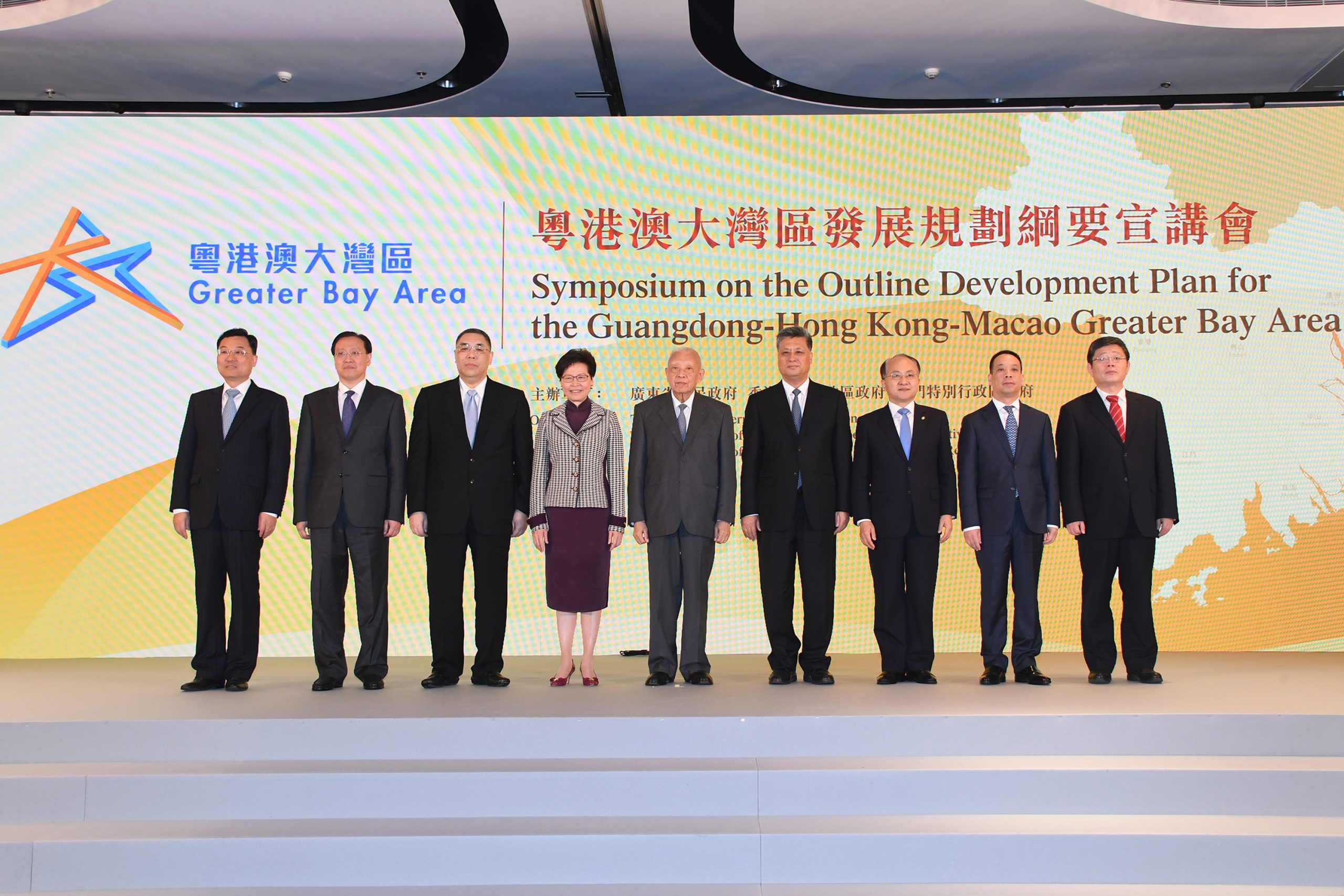
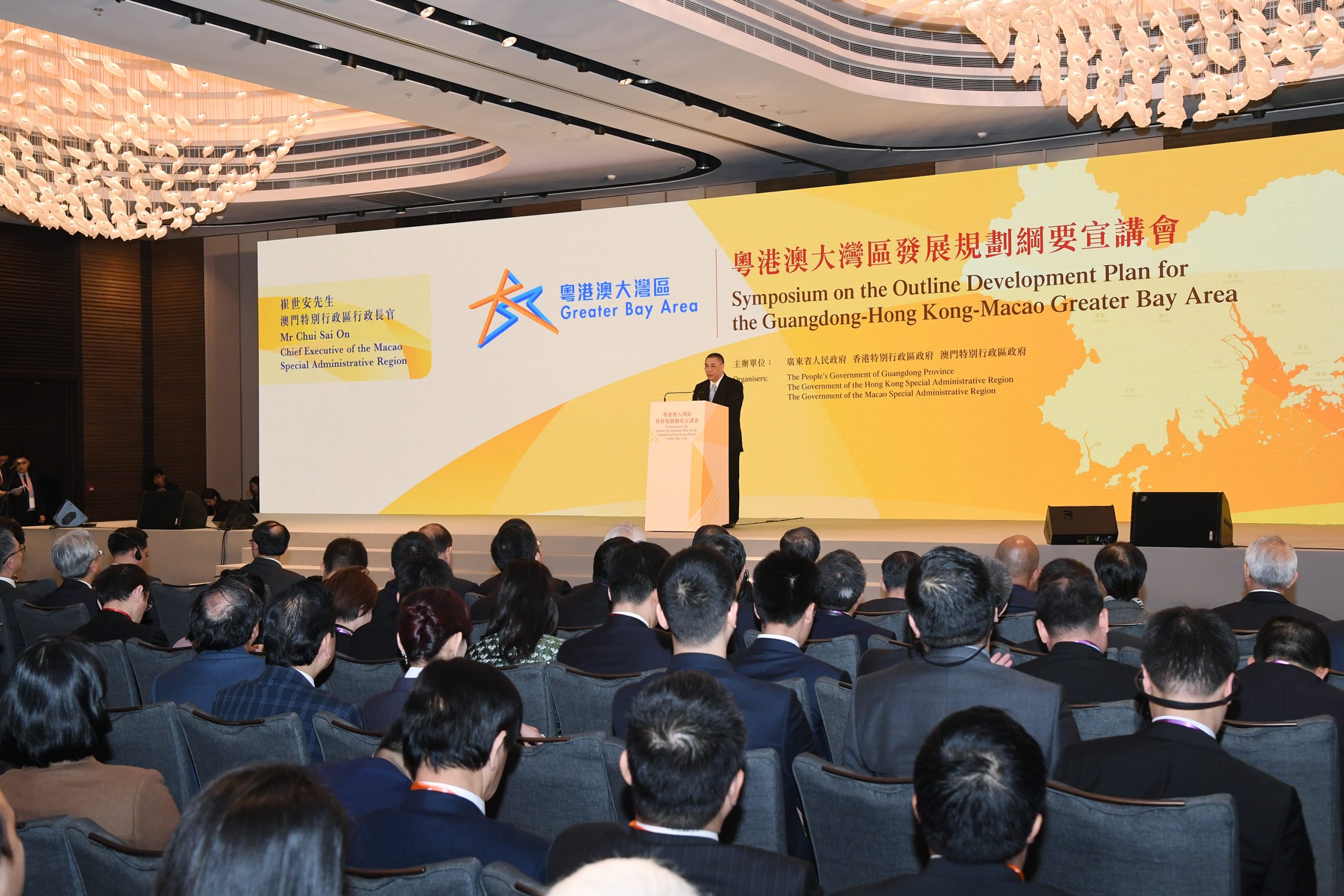
It supports efforts to enhance the international competitiveness of the PRD port cluster. Hong Kong’s status as an international maritime centre will be enhanced, with the SAR developing high-end maritime services such as ship management and leasing, ship finance, marine insurance, maritime legal advice, and dispute resolution.
The Plan aims to develop a world-class airport cluster in the GBA. Hong Kong’s status as an international aviation hub will be consolidated, with the SAR strengthening its role as an aviation management training centre. Efforts will be made to raise the competitiveness of Guangzhou’s and Shenzhen’s airports as international hubs, and to strengthen the functions of airports such as those in Macao and Zhuhai.
The Plan supports the construction of the Three-Runway System at the Hong Kong International Airport, and the expansion of Macao’s airport. It also supports the reconstruction and expansion works at the airports in Guangzhou and Shenzhen.
It calls for the expansion and modification of busy sections of national motorways such as the Shenyang–Haikou Expressway (G15) and the Beijing–Hong Kong–Macao Expressway (G4).
The Plan focuses on the building of a rapid transport network in the GBA, connecting the mainland with Hong Kong and Macao, as well as connecting the east and west banks of the Pearl River Estuary. The network will consist of high-speed rails, inter-city railway links, and high-grade motorways with the aim of reducing travel time among major GBA cities to within one hour or less.
The GBA will adopt new models for clearance procedures to make better use of the Guangzhou–Shenzhen–Hong Kong Express Rail Link and the Hong Kong–Zhuhai–Macao Bridge. It plans to build new boundary crossings at the Liantang/Heung Yuen Wai Boundary Control Point, the new Guangdong-Macao border access (Qingmao Boundary Control Point), Hengqin Port (with the possibility of relocating the Cotai Frontier Port of Macao) and the West Kowloon Station of the Guangzhou–Shenzhen–Hong Kong Express Rail Link.
The Plan calls for the enhancement of cyber security protections and development of a new generation of information infrastructure, expanding internet bandwidth capacity in the GBA, and a comprehensive planning for the next-generation IPv6 (Internet Protocol Version 6) network.
Modern industrial system
The Plan calls for enhancing the energy supply structure of the GBA by deepening supply-side structural reform, striving to nurture new industries, new types and new models of businesses, and supporting the transformation and upgrading of traditional industries.
It supports Macao in developing a China-Lusophone countries platform to provide financial services, an export credit insurance system, and an RMB clearing centre for Lusophone countries. Efforts will be made to leverage Macao’s strengths as the headquarters of the China-Portuguese-speaking Countries Cooperation and Development Fund, and to promote financial cooperation services between China and Lusophone countries. A Macao-Zhuhai cross-boundary financial cooperation demonstration zone will also be considered.
The Plan supports Macao in developing special financial products and services such as leasing. It seeks to explore the feasibility of establishing in Macao a securities market denominated and cleared in RMB, a green finance platform, and a Sino-Lusophone countries financial services platform.
The Plan supports eligible Hong Kong and Macao banks and insurance institutions in setting up operations in Qianhai of Shenzhen, Nansha of Guangzhou, and Hengqin of Zhuhai.
It also supports Macao expediting the development of a food trading and distribution hub for Lusophone countries.
By 2022, the combined strength of the GBA ahouls increase substantially, with deeper cooperation among Guangdong, Hong Kong, Macao. The result will be a framework for an international first-class bay area and a world-class city cluster that is vibrant and highly innovative in a pleasant ecological environment.
Developing an education and talents hub
The Plan supports Macao in establishing a training base for bilingual talents proficient in Chinese and Portuguese, and in leveraging the experiences and strengths of Macao in tourism training and education and in promoting its tourism industry.
The Plan supports the implementation of key cultural projects such as the Guangdong-Hong Kong-Macao Youth Cultural Exchange Tour, the Funding Scheme for Youth Exchange in the Mainland of Hong Kong, and the Thousand Talents Programme of Macao.
The Plan also supports Macao in leveraging its distinctive characteristics as a place where diverse cultures from both East and West have long integrated and coexisted, expediting the development of cultural industries and cultural tourism, and developing a cultural exchange centre between China and Lusophone countries.
A bay area for leisure
The Plan promotes diverse tourism products including culture and history, leisure and vacation, healthcare and well-being, and cruise and yacht travel in the GBA. It seeks to enrich boutique travel itineraries for Guangdong, Hong Kong and Macao, and multi-destination high-speed railway tourism products.
The Plan supports Macao in its efforts to become a world-class tourism and leisure centre, in part by setting up in Macao a cooperation alliance in tourism for other GBA cities and pursuing the sharing of regional tourism resources among Guangdong, Hong Kong and Macao. It seeks to establish the GBA tourism brand, develop creative tourism products, and improve generally the quality of tourism and leisure.
The Plan will promote the effective implementation of a Guangdong-Hong Kong-Macao individual yacht travel scheme, expedite the improvement of hardware and software facilities, and seek to create a free port for international yacht tourism.
Belt and Road
Under the Plan, the GBA will strengthen its participation in the BRI, with deeper cooperation between Guangdong, Hong Kong, and Macao.
It supports efforts to strengthen judicial exchanges and cooperation of cities in the GBA, and the development of a multi-faceted dispute resolution mechanism. It also calls for the development of an international arbitration centre, supports exchanges and cooperation among arbitration and mediation organisations in Guangdong, Hong Kong and Macao, and promotes arbitration and mediation services in the GBA.
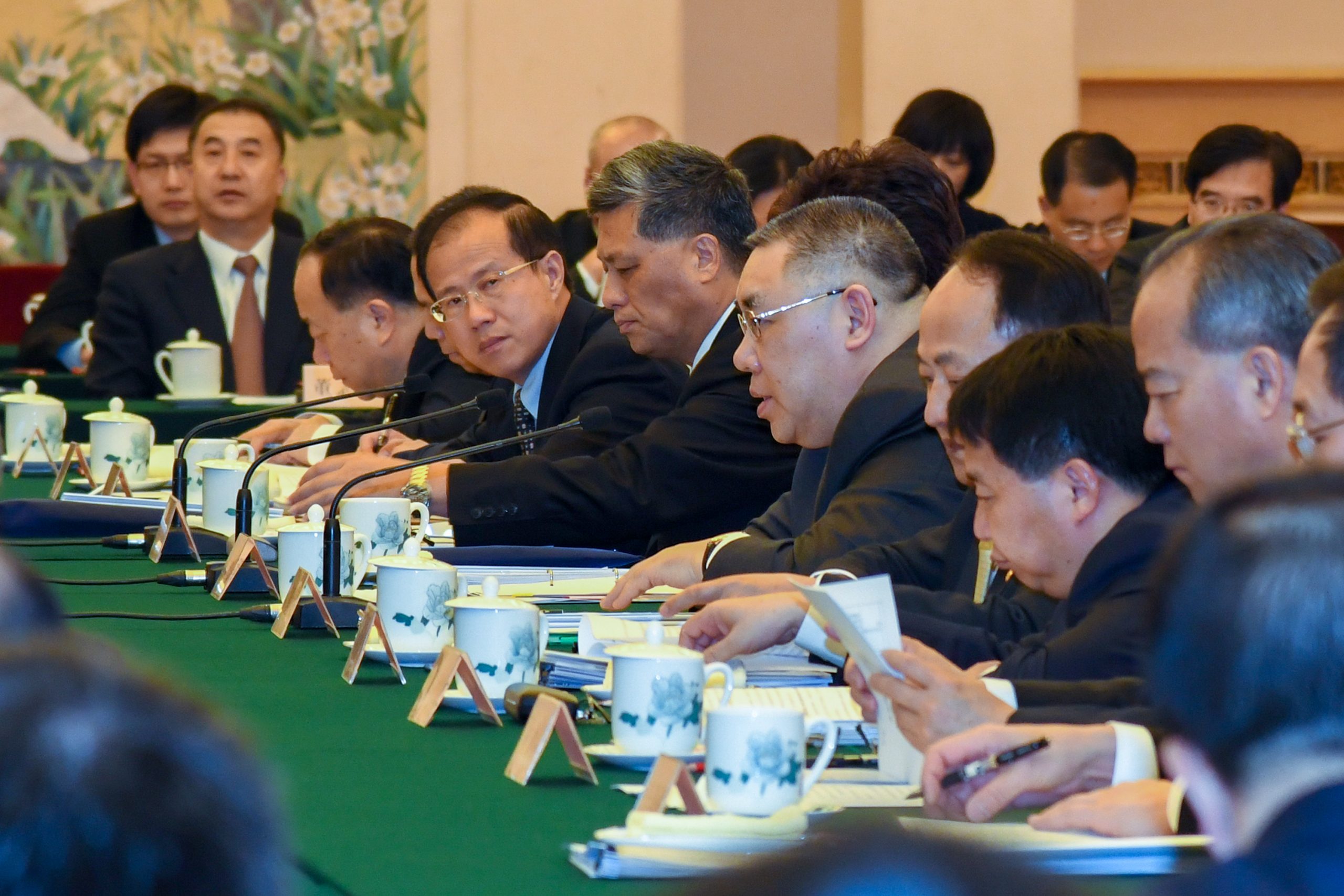
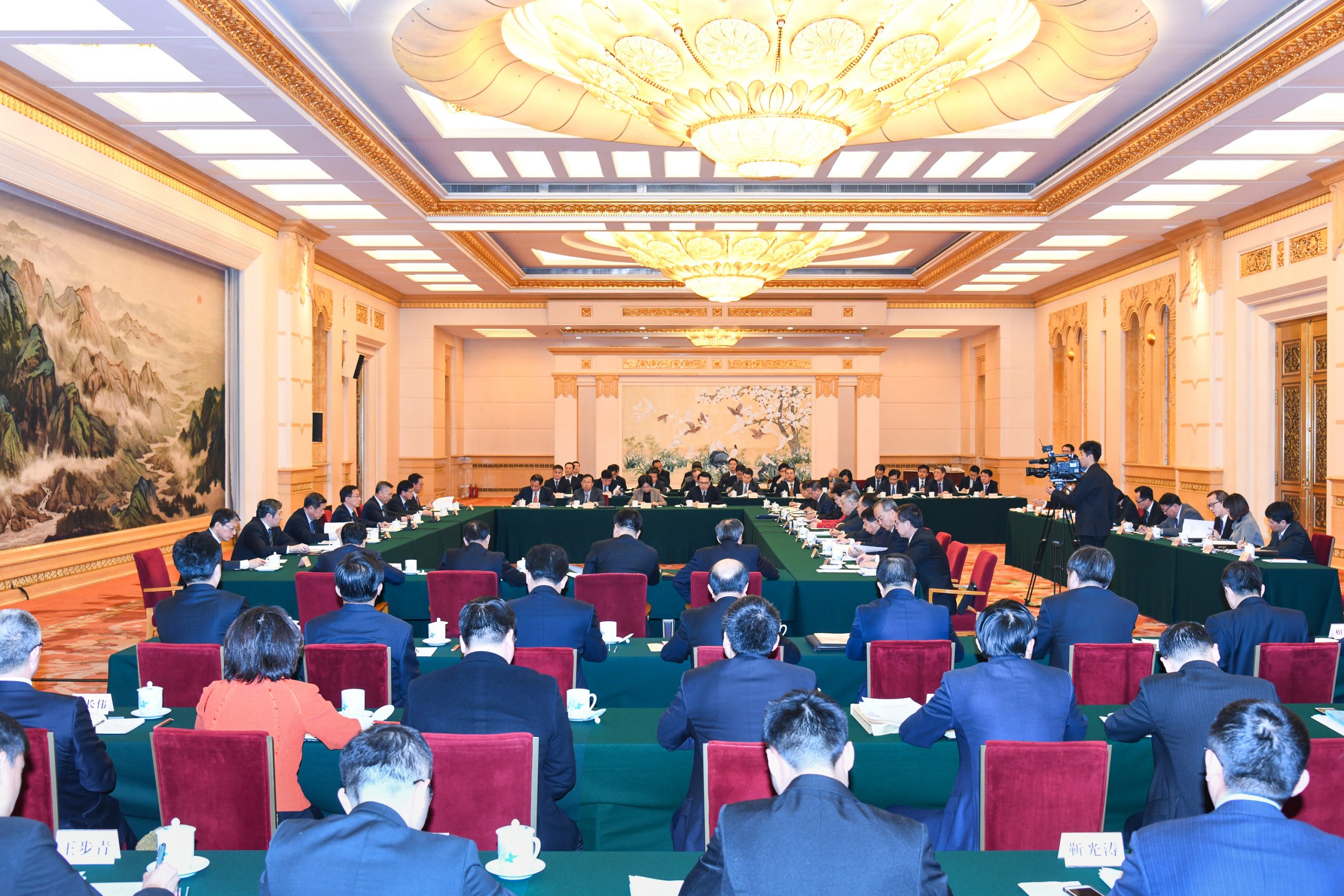
Market integration
The Plan supports the implementation of the Agreements under the respective Closer Economic Partnership Agreements (CEPAs) with Hong Kong and Macao, in sectors such as finance, education, law and dispute resolution, maritime transport, logistics, rail transport, telecommunications, Chinese medicine, construction, and related engineering.
It supports further liberalisation under the CEPA framework, allowing Hong Kong and Macao professionals and enterprises to enjoy national treatment in more sectors in the mainland.
It supports expanding the scope of the mutual recognition of professional qualifications among the mainland, Hong Kong and Macao, under a system of ‘one examination, three certifications’ – namely, passing one unified examination to obtain a vocational qualification at the national, Hong Kong and Macao levels.
The Plan aims to strengthen Hong Kong’s status as a global offshore RMB business hub, and support Macao’s participation in the Silk Road Fund, the China-Latin American Production Capacity Cooperation Investment Fund, the China-Africa Industrial Capacity Fund, and the Asian Infrastructure Investment Bank.
The Plan supports Macao’s ties with Lusophone countries, and efforts to capitalise on the Commercial and Trade Cooperation Service Platform between China and Portuguese-speaking Countries. It strives to ensure the success of the Forum for Economic and Trade Cooperation between China and Portuguese-speaking Countries (Macao), and strengthen the functions of the China-Portuguese Speaking Countries Cooperation and Development Fund.
It supports professional services (such as finance, law, trade and investment information, industry and regional cooperation) for the promotion of exchanges between Lusophone countries and the mainland, Hong Kong, and Macao enterprises. All can jointly tap the markets in Lusophone countries.
Cooperation platforms
The outline aims to speed up the development of major existing economic platforms such as Qianhai of Shenzhen, Nansha of Guangzhou and Hengqin of Zhuhai, and fully leverage their experimental and demonstration functions in deepening reform.
Qianhai
Objectives in Qianhai centre on strengthening its role as an engine of cooperation and development, enhancing cooperation in legal matters, and developing a new international city centre in the commercial development.
The Plan states the need to compile a blueprint for the development of the Shenzhen-Hong Kong Modern Service Industry Cooperation Zone and consider the further expansion of Qianhai. The aim is to facilitate the innovative development of the financial sector, with policies such as expanding the functions of offshore accounts.
It will explore effective paths to capital account convertibility. It will support the Qianhai Mercantile Exchange of the Hong Kong Exchanges and Clearing Limited in establishing a spot commodities trading platform for serving domestic and foreign clients. It will enhance cooperation in green finance and fintech between Hong Kong and Shenzhen. It will also develop a high-end international maritime service centre, and modern maritime services such as ship finance and marine insurance.
Nansha
As a state-level new area and pilot free trade zone, Nansha is positioned to be a GBA support zone for international shipping, finance, and innovation. Objectives for developing Nansha of Guangzhou largely centre on cooperative efforts, joining with Hong Kong and Macao to develop a high-standard gateway for opening up and to jointly develop a demonstration zone for innovative development.
The Plan also calls for the development of a key financial service platform and a high-quality urban environment in the district.
Hengqin
To complement Macao’s development into a world tourism and leisure centre, Hengqin of Zhuhai is set to be a high-standard international leisure and tourism island. The Plan calls for a study on facilitation measures for visitors travelling between Hengqin and Macao, and allowing Macao tourism practitioners to provide relevant services in Hengqin.
It supports the coordinated development of Hengqin, Zhuhai Free Trade Zone and Hongwan area, and development of a Guangdong-Hong Kong-Macao logistics park. It supports major cooperation projects such as the Macao-Hengqin Youth Entrepreneurship Valley (Inno Valley Hengqin) and the Guangdong-Macao Cooperation Industrial Park, and a study on the establishment of a Guangdong-Macao information hub.
It calls for further development of the Traditional Chinese Medicine Science and Technology Industrial Park of Cooperation between Guangdong and Macao and to explore allowing eligible Hong Kong, Macao, and foreign medical personnel to practise directly in Hengqin.
The Plan supports Zhuhai and Macao to jointly develop livelihood projects with integrated services including elderly care, living, education, and healthcare in Hengqin. It calls for exploration of the direct application and extension of Macao’s healthcare system and social insurance to such projects. It will study the possibility to have professionals and enterprises from Macao to participate in the development and management of the projects. Establishment of a healthcare fund to offer healthcare protection for Macao residents receiving medical treatment in Hengqin and schools for Macao’s students will also be studied.
The Plan supports Hengqin and Macao to jointly develop the China-Latin America economic and trade cooperation platform, and to establish international trade channels between the mainland and BRI-related countries and regions. Hengqin will provide a pivot for Macao’s development of cross-boundary e-commerce industries and facilitate the convenient entry of products from Lusophone countries into the mainland market via Macao. The Plan also calls for study of delegating authority to Hengqin for issuing residence permits to foreigners.
